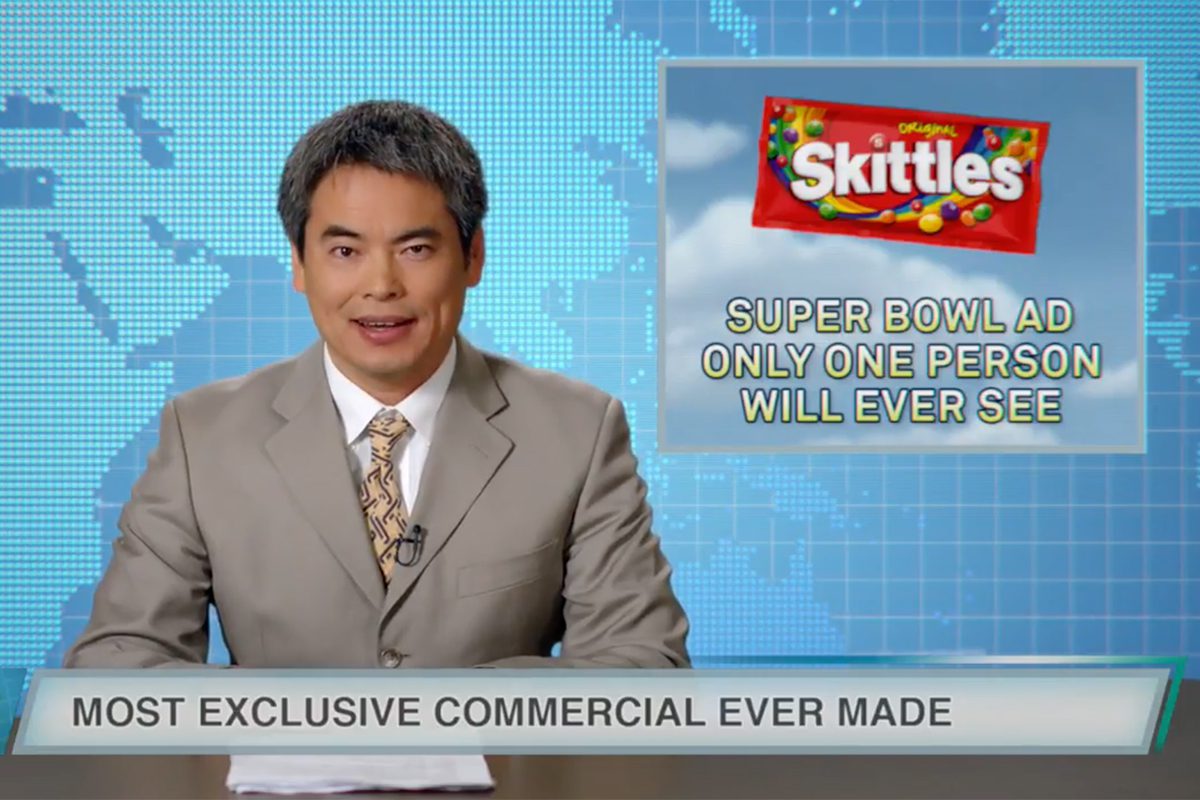Evaluating Super Bowl ads has become an immensely popular spectator sport since the big game emerged in 1967. What’s changed recently is that people not only care about the content of the ads but how they’re delivered. For instance:
- We experienced the rise of real-time ads in 2013.
- We’ve seen other advertisers take the “anti-real-time” approach, creating a build-up for the big game by sharing teasers for their ads ahead of time, similar to movie trailers. Some brands actually release the ads themselves before the game, in an effort to generate conversation, accumulate online views, and presumably extend the shelf life of the notoriously expensive ads.
- We’ve seen a variety of other approaches that can best be described as stunts, ranging from Snickers livestreaming the actual set of its ad (for a behind-the-scenes approach) to 84 Lumber generating publicity by talking about an ad that was rejected (a “how we courted controversy” approach).
The latest stunt: Skittles will broadcast a 60-second spot for an audience of one: a teenager named Marcos Menendez from Canoga Park, California. The rest of us will watch Menendez’s reaction via a livestream on Skittles’ Facebook page. Lest you think that Skittles is pulling off the ultimate act of narrowcasting, consider the engagement Skittles is generating:
- Creation of content about the ad. As Matt Montei, vice president of fruit confections for Skittles’ parent Mars, told Adweek, “We’ll also have content in the form of four different teasers for everyone to view and speculate what that final ad might be, even though they themselves will not be able to view the final ad.”
- Generation of buzz for Skittles including the audience with the inevitable “Who is Marcos Menendez?” narrative emerging. Think about that. How many ads create conversation because of the audience watching them? The PR entered the realm of the improbable and offbeat when Oakland Raiders Running Back Marshawn Lynch apparently tweeted his phone number because he wanted Marcos Menendez to call him in order to watch the ad with him.
It’s possible that the Skittles campaign is informed by the phenomenal story of Carter Wilkerson, a teenager whose obsession with Wendy’s Nuggets sparked a hilarious viral campaign on Twitter to help the teen win a free year of the nuggets. A seemingly random Twitter exchange between Wendy’s and one person resulted in Carter getting the most retweets in history – and for Wendy’s, powerful PR.
The Wendy’s/Carter Wilkerson story involved a real teen with a passion for Wendy’s Nuggets. But it’s questionable whether Marcos Menendez is even real. What kind of teen joins Twitter in January 2018? When you look at the tongue-in-cheek way Skittles promotes the “audience of one” on its Facebook page, it’s easy to conclude that we’re being set up for an ad that never was to a person who never was. By creating an audience of one, is Skittle’s stealing the voice and power of organic social media? If this campaign is just a stunt and Marcos isn’t real, will the stunt cause more distrust and backlash of social media? At a time when concerns about fake news are prevalent, Skittles could be taking a big risk.
Whether Marcos Menendez real or just a clever stunt, the Skittles promotion underscores the tremendous buzz that national brands create with their ads, both the content and the format. If you are affiliated with a national brand – let’s say you’re a retailer that sells Skittles online and offline – you should be capitalizing on the spike in awareness for Skittles occurring right now. For example, adjust your keyword bids and optimize your online inventory content for people searching where to buy Skittles. Make sure your socials tap into the national campaign. Put the stunt to work for you.
For more insight into how to build your brand and generate revenue through digital advertising, contact True Interactive. We’re here to help.
